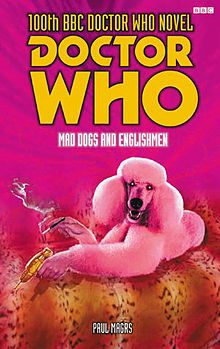Mad Dogs and Englishmen, by Paul Magrs – Book Review By Fred Patten.
by Patch O'Furr
Submitted by Fred Patten, Furry’s favorite historian and reviewer.
 Mad Dogs and Englishmen, by Paul Magrs.
Mad Dogs and Englishmen, by Paul Magrs.
London, BBC Books, January 2002, paperback £5.99 (249 pages).
Doctor Who is massively popular, but his adventures do not seem to offer much for furry fandom. But they do overlap in “The 100th Novel in the Record-Breaking BBC Worldwide Doctor Who Series”, to quote the back-cover blurb. Mad Dogs and Englishmen features the Eighth Doctor (Paul McGann, 1996-2005) and his Companions at the time, Fitz Kreiner and Anji Kapoor. The novel is also a parody of J. R. R. Tolkien’s writing of The Lord of the Rings.
The first chapter is about Professor Reginald Tyler, a reclusive British university don who spends his life from 1917 to his death in 1974 writing and rewriting his magnum opus The True History of Planets, “an epic of dwarves and swords and wizardry. And definitely no poodles. Or at least there weren’t when the Doctor read it.” (blurb) When Prof. Tyler dies, his widow takes his towering manuscript to a publisher.
“She was the one who had hoiked out the dusty manuscript of the ongoing book and promptly sold it for a bomb.
One that set off reverberations everywhere.
Up and down the length of the twentieth and twenty-first centuries on Earth, and other worlds besides.
Notably the dogworld.” (p. 3) Read the rest of this entry »


 The Wind in the Willows, by Kenneth Grahame. Frontispiece by Graham Robertson.
The Wind in the Willows, by Kenneth Grahame. Frontispiece by Graham Robertson.
